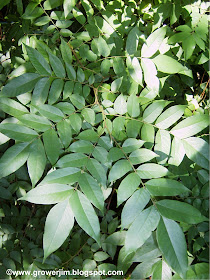Flowering can happen any time, but they mainly appear starting in early to mid-summer and continue through early winter. Buds and blooms emerge from the leaf axils of new growth,
or directly from the woody branches of the tree.
The fruit starts to ripen in mid to late summer and will be non-stop until mid-spring. A single tree can produce an enormous quantity of fruit. Trees that receive adequate nutrients and moisture can provide 300 pounds of fruit per year.
The ripe, yellow fruit is 4-5 inches in length, and very juicy, but with a firm crunchy texture. The fruit is at its peak flavor when it has a deep yellow-orange color and is starting to show a little brown at the tips or on the edges of the ribs.
Carambola fruit deteriorates rapidly once it is ripe so you never find truly ripe fruit in stores. The only way to experience their full flavor is to grow your own, or get it directly from another grower.
The common name of Starfruit refers to the shape of the fruit, especially when cut into thin slices.
Most Starfruit are consumed fresh, but they can also be made into jams, cobblers, pies, and drinks. They can also be dehydrated for later use. The flowers are edible and can be added to salads for color.
The flavor of fruit from different varieties varies between sweet and tart. Named varieties also vary in size and color intensity. Some cultivars require cross-pollination for improved fruit set.
Averrhoa carambola grows 25-35 feet tall in sun or light shade and is recommended for USDA Zones 9B to 11. Mature trees can survive a hard freeze for short periods of time and the trees are evergreen if no freezes occur.
The large pinnate leaves give the tree a ferny appearance.
The outer branches tend to weep downward, especially when they are laden with fruit. Heaviest fruit production is usually on the lower half of the tree, making for easier picking when the fruit is ripe.
The Carambola fruits contain oxalic acid, and the juice of the tart varieties can be used to polish metals, especially brass. There are folk remedies from around the world utilizing various parts to the tree to treat many afflictions, including headache, vomiting, eczema, fevers, and hangover! Medical studies indicate patients with chronic renal failure (on dialysis) should avoid eating starfruit due to documented adverse reactions.








Very interesting post about star fruit. I've often contemplated purchasing some from the grocery store now I shall be more inclined to do so. Amazing that one tree can produce so much!
ReplyDeleteHello!
ReplyDeleteI just discovered your blog
Those fruits look great!
Back at my country we have it fresh with water, to help having a good digestion after a big meal
all this and it can polish metal too?!
ReplyDeleteamazing fruit... thank you for all the information about something I was totally unfamiliar with! L
ReplyDeleteI love these fruits, they are very juicy and sweet when ripe and said to have medicinal value
ReplyDeleteof 'cleaning' your kidney.
I really like your blog and i really appreciate the excellent quality content you are posting here for free for your online readers. thanks peace claudia.
ReplyDeleteto have a successful blog has a simple formula: do your best, and people may like it. and you did it man great work...
ReplyDelete